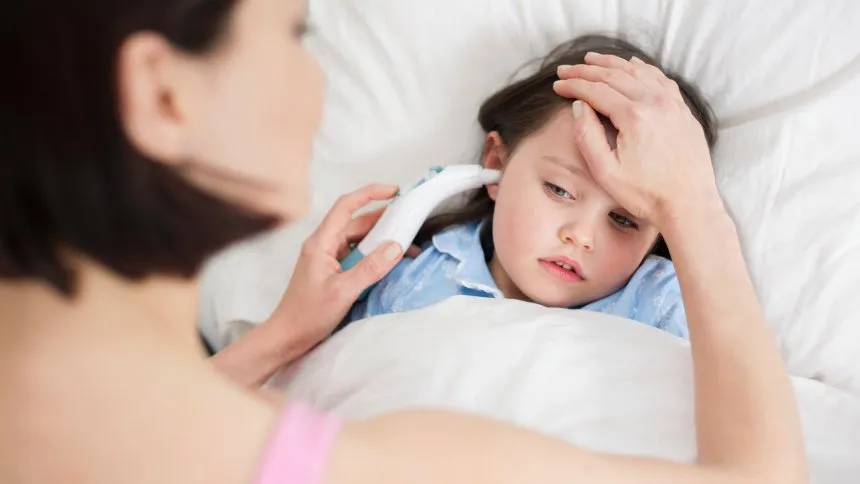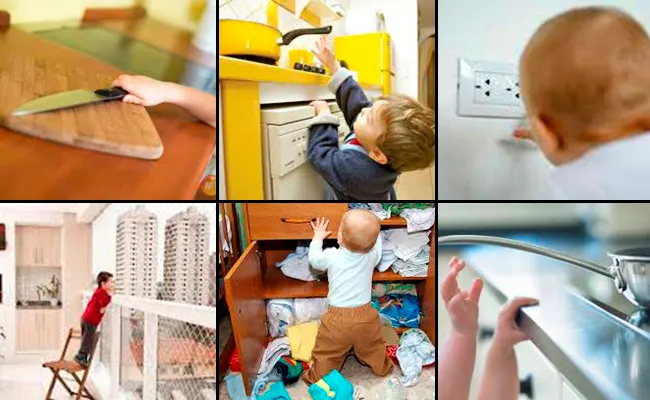The period of growth of our children is accompanied by happy moments, but as everything is not the color of roses, we also go through difficult situations, as is the case of everyday accidents in the home.

As accidents are the main cause of death for children, for this reason, it is important to know what to do or what not to do in an emergency situation, being essential to save the life of the person.
There are parents in the middle of an accident who are paralyzed by nerves, while others rush to act incorrectly, the essential thing is that as parents we have different tools to know how to act in cases of burns, bumps, poisonings, drowning in the bathtub or as a common suffocation with small pieces.
There are situations of minor emergencies, which only require care and cures; However, there are others who need first aid to avoid putting the life of the victim at risk.
When to go to an emergency service?
• Respiratory difficulty.
• Convulsions.
• Persistent vomiting.
• Cranial contusions (loss of consciousness).
Frequent emergencies in children

• Acute laryngitis: inflammation of the subglottic and vocal cords, usually causes respiratory distress and manifests with the following symptoms, such as a dog cough, hoarseness, aphonia, and low fever. In this case, it is important to keep calm, place the child in a semi-sitting position and in contact with the cold air, then go to the doctor for their respective evaluation.
• Acute dehydration: caused by gastroenteritis, insolation or burns, manifests with decomposition, drowsiness, sunken eyes, little urine, lips, and dry tongue. For this case, it is essential to replace the fluids with serum, lemonades or alkaline drinks, then go to the doctor for immediate attention.
• Febrile seizures: usually appear with prolonged and very high fevers between 39.5 and 40 ° C, almost always manifest with loss of consciousness, seizures, fixation of the look on one side and drowsiness. For this type of emergency, it is essential to remain calm, lower the fever, open the airways, cleanse the secretions and avoid being hit.
How should we act in the face of domestic accidents

Source
• Bites or scratches of an animal: it can be superficial or a deep wound. Here, if the wound bleeds abundantly, it is essential to apply pressure on the affected area with a clean towel, wash hands, clean the wound with soap and water, leave it under the jet for several minutes and then cover it with sterile gauze. In this case, it is important to know the origin of the animal and if you have the vaccines, otherwise, you must go to the doctor to receive timely treatment.
• Bee or wasp stings: swelling, redness, and itching occur in the affected area. Generally, when it stings it leaves its sting, you must extract it with a card or a straight edge object, but never remove it with a pincer because you run the risk of squeezing the poison and it can be injected. After removing the sting, begin to clean the wound with soap and water, apply a compress with a cloth with ice and then an ointment for the bites. If the swelling is important, it is advisable to go to the doctor.
• Jellyfish stings: it produces burning, redness, and inflammation. Proceed quickly to remove the tentacles with a towel, rinse the area with seawater, never with fresh water. Then apply corticosteroid ointments.
• Tick bites: you can pay attention if the tick is attached to the child's skin and if it shows local redness or swelling. For this emergency, use a small tweezer to grab the tick by the head, then pull the tweezer firmly to separate it from the skin, wash your hands and place the bite with soap and water. Go to the doctor if the child persists with redness or if you have symptoms similar to the flu.
• Poisoning or poisoning: when the child has ingested a toxic substance, you must identify the type of product you ingested and then observe the child if you have symptoms such as shortness of breath, vomiting, pain in the abdomen and drowsiness. For this type of situation, it is important to take the original bottle of the substance and go immediately to the doctor, never try to cause vomiting or milk the child.
• Burns: direct contact with hot liquids, fire, electricity or chemical products. First, you must separate the child from the heat source, remove the warm clothes, cover the burned area with a clean cloth and administer an analgesic to calm the pain. If the burn is caused by electricity, be careful not to touch the child if you continue to come in contact with the source of electricity. Never apply an ointment or break the blisters, if they exist.
• Head injuries: are caused by falls, traffic accidents or sports. If the trauma is mild, apply only cold on the bruise and keep the child under observation for 24 hours. If, on the other hand, the wound is severe and is open, it is necessary to go to the doctor to suture and keep it supervised by an adult if it presents a strange behavior or if a headache persists.
• Epistaxis: Bleeding from one or both orifices. For this type of emergency, it is important to reassure the child, place him or her sitting forward, not lying down. Then, the bleeding nose should be compressed forcefully, like a pincer, for 8-10 minutes. If after this time the bleeding persists, it is urgent to take it to the doctor.
• Drowning: it is important to stay calm and start cardiopulmonary resuscitation maneuvers.

Acting correctly is important because it can save the child's life, so it is important to expand the knowledge and skills necessary to administer these first child care.
Posted from my blog with SteemPress : http://lmrey.vornix.blog/2018/09/09/how-to-properly-apply-first-aid-at-home/

